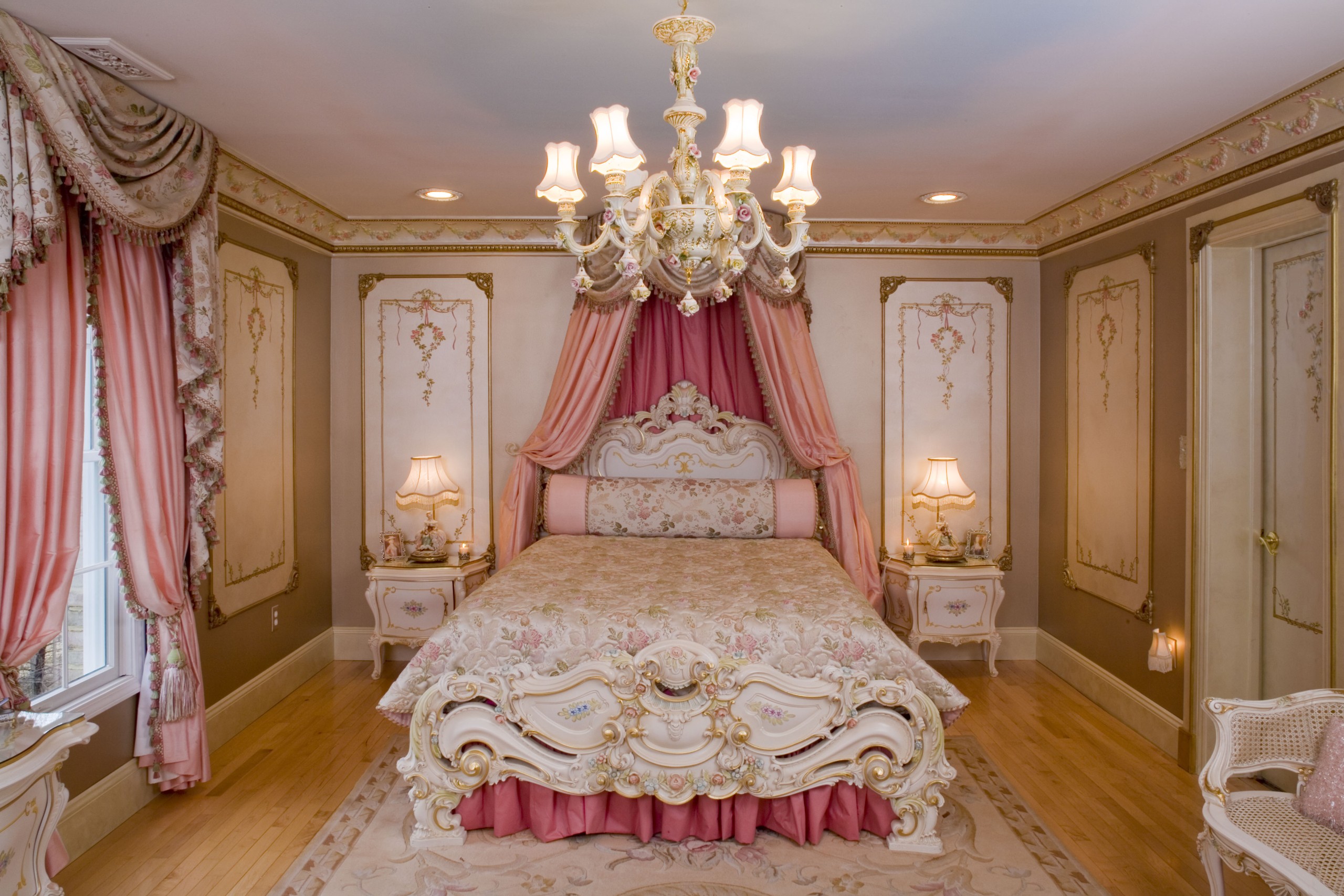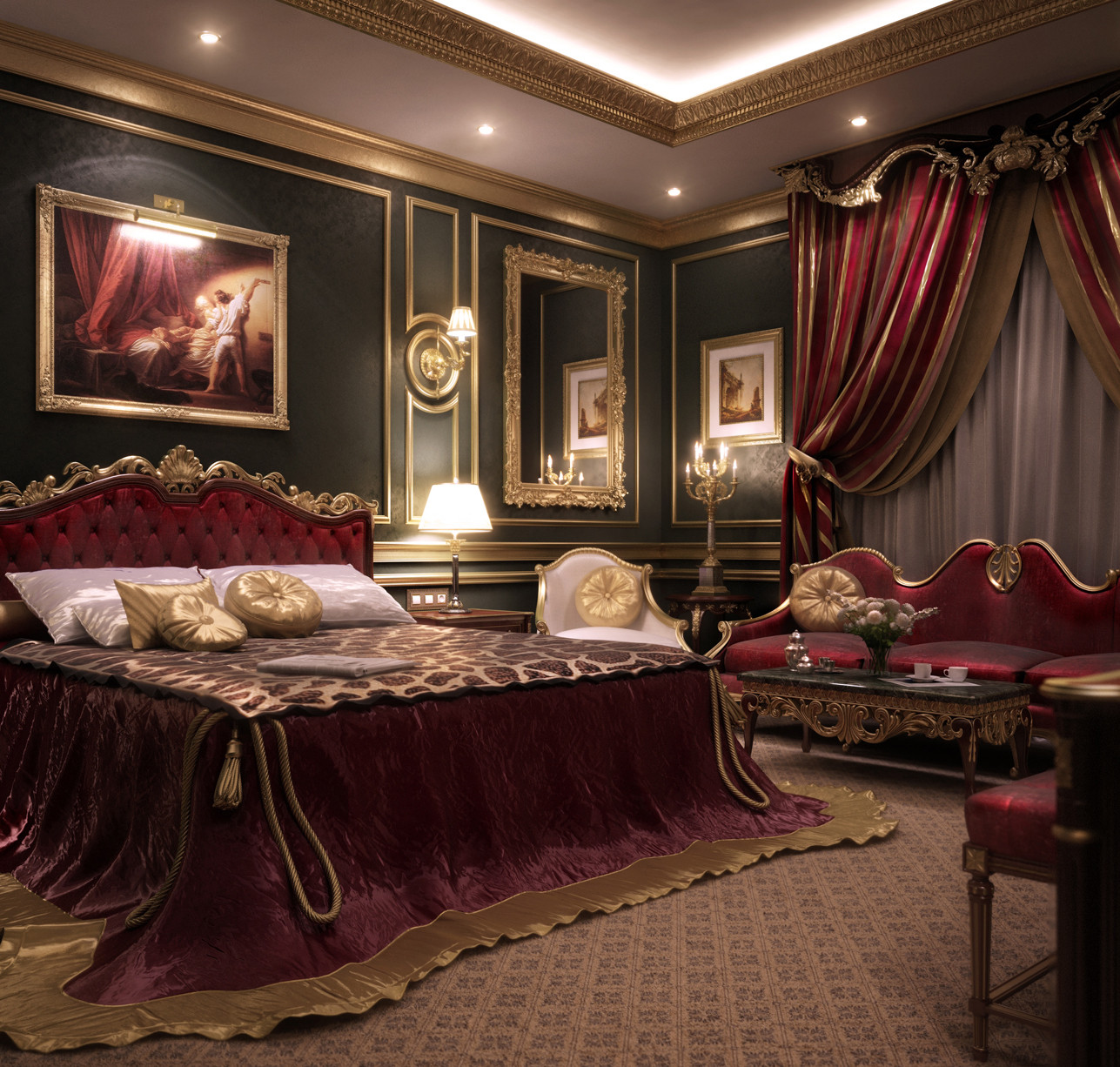Defining Victorian Style Bedroom Furniture

Victorian style bedroom furniture is a captivating blend of opulence, craftsmanship, and intricate details, reflecting the aesthetic sensibilities of the Victorian era (1837-1901). This style is characterized by its rich materials, elaborate ornamentation, and a focus on comfort and functionality.
Key Characteristics of Victorian Style Bedroom Furniture
Victorian bedroom furniture is defined by its distinct features, encompassing materials, craftsmanship, and design elements.
- Materials: Victorian furniture makers favored high-quality materials, including hardwoods like mahogany, walnut, and rosewood. These woods were often polished to a high sheen, highlighting their natural grain and beauty. Inlays of ivory, mother-of-pearl, and other precious materials were frequently used to enhance the furniture’s aesthetic appeal.
- Craftsmanship: Victorian furniture is renowned for its meticulous craftsmanship. Skilled artisans employed techniques like hand-carving, marquetry, and intricate joinery to create pieces that were both functional and visually stunning. The furniture was often constructed with dovetail joints, mortise and tenon joints, and other traditional methods that ensured its durability and longevity.
- Design Elements: Victorian furniture is characterized by its elaborate ornamentation and attention to detail. Common design elements include:
- Carving: Intricate carvings adorned the legs, frames, and surfaces of Victorian furniture, featuring floral motifs, animal figures, and geometric patterns.
- Upholstery: Rich fabrics like velvet, brocade, and damask were used to upholster chairs, sofas, and beds, adding a touch of luxury and elegance.
- Gilding: Gold leaf or paint was often applied to furniture to enhance its visual impact and create a sense of grandeur.
- Inlay: Intricate designs were created by inlaying contrasting woods, ivory, or mother-of-pearl into the furniture’s surface.
Iconic Victorian Furniture Pieces
Victorian bedroom furniture includes a range of iconic pieces that embody the style’s essence.
- Four-poster Beds: These grand beds were often adorned with elaborate canopies and drapes, creating a sense of privacy and luxury.
- Dressing Tables: Victorian dressing tables were typically large and ornately decorated, featuring multiple drawers for storing cosmetics and jewelry.
- Wardrobes: Victorian wardrobes were substantial pieces of furniture, often featuring intricate carvings and multiple doors for ample storage space.
- Chests of Drawers: These chests were used for storing clothing and other personal items, often featuring ornate hardware and intricate carvings.
- Armoires: Victorian armoires were tall, freestanding cabinets with doors that could be used for storing clothing, linens, or other household items.
Historical Context of Victorian Design, Victorian style bedroom furniture
Victorian design emerged during a period of significant social and economic change, influenced by various factors:
- Industrial Revolution: The Industrial Revolution led to the mass production of furniture, making it more affordable and accessible to a wider population.
- Colonialism: The British Empire’s global reach exposed Victorian designers to diverse cultures and styles, influencing their work.
- Romanticism: The Romantic movement emphasized emotion, imagination, and nature, which found expression in the ornate and sentimental aspects of Victorian design.
- Gothic Revival: This architectural movement, which drew inspiration from medieval Gothic architecture, influenced Victorian furniture with its pointed arches, intricate carvings, and use of dark woods.
Evolution of Victorian Style
Victorian design evolved over time, with different sub-styles emerging:
- Early Victorian (1837-1860): This period was characterized by simple, elegant furniture with a focus on comfort and functionality.
- Mid-Victorian (1860-1880): This period saw a rise in elaborate ornamentation, with furniture featuring heavy carvings, elaborate upholstery, and a more flamboyant aesthetic.
- Late Victorian (1880-1901): This period marked a shift towards more restrained and streamlined designs, with furniture featuring simpler carvings and less ornate detailing.
Essential Victorian Bedroom Furniture Pieces

A Victorian bedroom was not just a place to sleep; it was a reflection of status, taste, and the intricate details of life in the Victorian era. The furniture within these rooms was carefully chosen to create a luxurious and comfortable environment, with each piece serving a specific purpose and contributing to the overall aesthetic.
Essential Victorian Bedroom Furniture Pieces
The most common Victorian bedroom furniture pieces were carefully selected to create a comfortable and aesthetically pleasing space. Here is a table highlighting the essential furniture pieces and their key features:
| Furniture Piece | Key Features | Uses | Placement |
|---|---|---|---|
| Four-poster Bed | Large, ornate bed frame with four posts supporting a canopy. Often made of mahogany, walnut, or rosewood. | The focal point of the bedroom, providing a sense of grandeur and privacy. | Centrally located in the room. |
| Dressing Table | A vanity table with a mirror and drawers for storing personal items. Often adorned with intricate carvings and inlays. | Used for grooming and personal care. | Typically placed near a window for natural light. |
| Wardrobe | A large, freestanding cabinet with shelves and drawers for storing clothing. Often crafted with elaborate carvings and decorative hardware. | Used for storing clothing and other personal belongings. | Positioned against a wall or in a corner. |
| Chest of Drawers | A smaller cabinet with drawers for storing linens, personal items, and other belongings. | Provides additional storage space for various items. | Placed near the bed or in a corner. |
| Washstand | A small table with a basin and pitcher for washing hands and face. Often equipped with a mirror and a towel rack. | Used for personal hygiene. | Located near the dressing table or a window. |
| Armchair | A comfortable chair with arms, often upholstered in velvet or brocade. | Used for reading, relaxing, or receiving guests. | Placed near a window or fireplace. |
| Ottoman | A cushioned footstool or a small upholstered seat. | Provides extra seating or serves as a footrest. | Positioned near the bed or armchair. |
Functionality and Aesthetic Appeal
The functionality and aesthetic appeal of Victorian bedroom furniture were closely intertwined. Each piece was designed to serve a practical purpose while also contributing to the overall elegance and opulence of the room.
The four-poster bed, with its elaborate canopy and ornate carvings, was the centerpiece of the bedroom, signifying the status and wealth of the owner. The dressing table, often adorned with intricate carvings and inlays, was not just a place for grooming but a statement piece reflecting the owner’s taste and refinement. The wardrobe, with its ample storage space and elaborate detailing, showcased the owner’s fashion sense and social standing.
The overall effect was one of luxurious comfort and meticulous attention to detail, reflecting the values of the Victorian era.
Social Status and Personal Taste
Victorian bedroom furniture was not just about functionality; it was a powerful tool for expressing social status and personal taste. The materials used, the level of craftsmanship, and the intricate details all played a role in communicating the owner’s wealth and social standing.
For example, a mahogany four-poster bed with intricate carvings and a hand-painted canopy would be considered a luxury item, while a simpler bed made of pine would be more common in a middle-class household. Similarly, a dressing table with a marble top and elaborate silver hardware would be a status symbol, while a more basic dressing table with a wooden top and simple hardware would be more common in a modest home.
The choice of fabrics for upholstery and curtains also played a significant role in conveying social status. Rich velvets and brocades were considered luxurious and were often used in the bedrooms of the wealthy, while simpler fabrics like cotton and linen were more common in middle-class homes.
Beyond social status, Victorian bedroom furniture also reflected the personal taste of the owner. The choice of colors, patterns, and decorative elements could reveal the owner’s personality and interests. For example, a bedroom decorated in a romantic style might feature floral patterns and delicate colors, while a bedroom decorated in a more masculine style might feature darker colors and geometric patterns.
Victorian bedroom furniture was a reflection of the times, showcasing both the wealth and the values of the era. It was a combination of practicality and artistry, designed to create a luxurious and comfortable environment for the occupants.
Decorating with Victorian Style Bedroom Furniture

Transforming a bedroom into a Victorian haven is an art form that involves harmonizing furniture, textiles, and accessories to create a cohesive and opulent aesthetic. Achieving this style requires a deep understanding of the elements that define Victorian design and their skillful application.
Creating a Cohesive Victorian Bedroom Aesthetic
To achieve a truly authentic Victorian bedroom aesthetic, consider these key aspects:
- Furniture Placement: Arrange furniture pieces in a way that creates a sense of flow and balance. For instance, a four-poster bed should be the focal point, positioned against a wall with nightstands flanking it. A dressing table with a mirror can be placed opposite the bed, and a chaise lounge or armchair can be positioned in a corner for reading or relaxation.
- Textile Selection: Textiles play a crucial role in defining the Victorian style. Opt for luxurious fabrics like velvet, damask, silk, and brocade. Rich colors such as deep reds, emerald greens, golds, and burgundies are common in Victorian textiles. Consider using patterned fabrics for curtains, upholstery, and bed linens.
- Accessorizing: Accessories add the finishing touches to a Victorian bedroom. Use decorative items like antique clocks, silver picture frames, ornate lamps, and porcelain figurines. Consider adding a vintage rug to the floor, and use throws and pillows to add texture and warmth to the space.
Essential Decorative Elements for a Victorian Bedroom
The decorative elements in a Victorian bedroom are as important as the furniture. They add depth, character, and richness to the overall design.
- Wallpaper: Victorian wallpaper is known for its intricate patterns, bold colors, and elaborate designs. Common themes include floral motifs, geometric patterns, and damask prints. Consider using wallpaper on all four walls or as an accent wall.
- Carpets: Carpets were a significant feature in Victorian homes. They added warmth, comfort, and visual interest to the space. Look for carpets with rich colors, intricate patterns, and luxurious materials such as wool or silk.
- Artwork: Victorian art typically depicted scenes from nature, portraits, and historical events. Consider using paintings, prints, or photographs to decorate the walls. Antique frames add a touch of elegance and authenticity.
Color Palettes, Patterns, and Textures in Victorian Style
The use of color palettes, patterns, and textures is essential in creating a true Victorian style bedroom.
- Color Palettes: Victorian color palettes often featured rich, deep colors. Popular choices include deep reds, emerald greens, golds, burgundies, and blues. These colors were often used in combination to create a sense of warmth, opulence, and sophistication.
- Patterns: Victorian patterns were often elaborate and intricate. Common motifs include floral patterns, geometric designs, and damask prints. These patterns were often used in wallpaper, textiles, and carpets.
- Textures: Victorian bedrooms often featured a variety of textures. Velvet, damask, silk, and brocade were common choices for upholstery and drapery. Wood furniture was often carved or painted with intricate details.
Victorian style bedroom furniture is all about that grand, opulent vibe, right? But sometimes, even with all that space, things can get a little cluttered. You need a place for everything, just like you need a system for keeping your bathroom tidy.
Check out these amazing b&m bathroom storage solutions – they’re seriously inspiring! Then, you can bring that same sense of organization to your Victorian bedroom, because let’s face it, even the most beautiful furniture can’t hide a messy room.
Victorian bedroom furniture is all about intricate details and a touch of drama, just like a French style bathroom vanity adds a touch of romance and elegance to your bathroom. Think rich fabrics, carved wood, and maybe even a touch of gold.
Just like a French vanity, Victorian furniture is meant to be admired, so don’t be afraid to show it off.